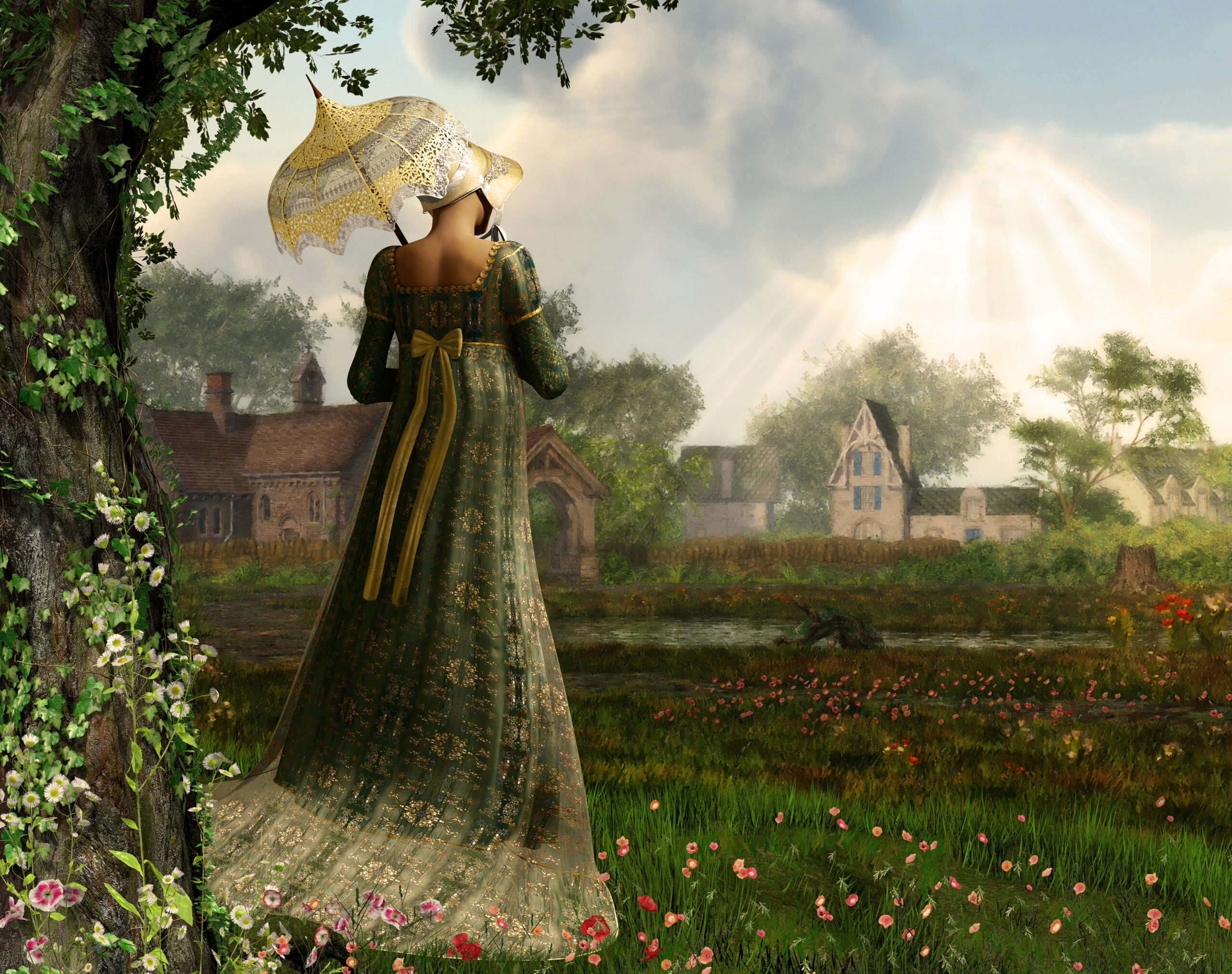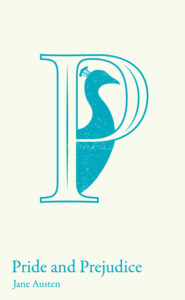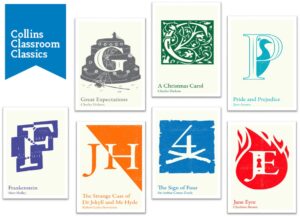Use these 5 discussion points and 5 extension tasks to help your students understand the context of this classic novel.
Pride and Prejudice by Jane Austen
Pride and Prejudice is a novel that is so embedded in our society that you could describe a man as ‘a Mr Darcy’ and it would be culturally recognised by most, even if they hadn’t read the novel. Its success lies perhaps in the clarity of the characters, the humour and the fact that a 20 year old Austen wrote well ahead of her time. Its dry wit and humour makes it a perfect classroom text. To describe the novel as a romance however is to ignore its key themes. Indeed, for romance to be fulfilled Elizabeth’s prejudice has to fall along with Darcy’s sense of pride. The novel warns of the both the folly and the reward in following your heart. Austen did not set out to write a novel about love and romance, she wanted to show how, ‘This world is not a stage for the display of the superficial…life is not a splendid romance, rather a true history…many pages of which will be dull’. In my opinion it is this honesty that keeps the novel engaging, funny, thoughtful and powerful.
5 Discussion points
- Austen creates two kinds of characters, those who are blindly following love and those who are more realistic. Which characters fall in to each category?
Blind: Lydia in her trust, lust and recklessness towards Mrs Wickham. Elizabeth when making a character assumption of Mr Darcy before truly getting to know him, ‘had I have been in love I could not have been so wretchedly blind. But vanity not love has been my folly’. Mrs Bennet who wishes above all to marry her daughters off to wealthy men.
Realistic: Charlotte Lucas who knows exactly what her married life to a man like Mr Collins will be like but chooses it anyway because it gives her security, social status and fulfils her ‘duty’ to marry well, Mary who has little interest in romantic love, Mr Bennet who wants his daughters to marry for love but knows that realistically good fortune is just as important.
- To what extent is Elizabeth an early 19th century equivalent of a post-feminist heroine?
Ask students to work in pairs initially to gather their opinions and use scenes from the novel to justify their ideas. The discussion would take place in small groups or as a class. You might also like to look at examples of modern day feminist icons and discuss what connotations the term has with the class. How does Elizabeth compare to the women of today?
- In which ways are Mr Bennet and Mr Darcy similar?
Both men are sarcastic, opinionated and witty with a dry sense of humour. Do you think Mr Bennet went out of his way to raise Elizabeth as a more head strong and opinionated woman with more traditionally masculine qualities then her sisters? He describes the other girls as ‘all silly and ignorant like other girls; but Lizzy has something more of a quickness than her sisters’. Does this make her the ideal match for Darcy?
- How is shame a hindrance to characters in the novel?
Consider: 1. Lydia’s elopement and exploitation by Wickham and what that does to her family. Did she consider them at all? 2. The Bennet’s lack of money and male heirs which then makes his position in society perilous. 3. The younger girls’ behaviour in public and the fact that they are all ‘walking out’ in society at once. 4. Mrs Bennet and her rudeness, vulgarity in public and vanity. 5. Caroline Bingley’s comments about the Bennet’s, ‘to imagine we’d need assistance in society’ she scoffs. 6. Mr Collins and his lack of shame and obsequiousness self-importance, especially given the fact that he’s a man of God. Teachers could give small groups a consideration each or have them on the IWB, leaving each up for 5 minutes of discussion before moving on.
- Critics argue that this novel is ‘about women for women’ do you agree or disagree? Divide the class according to their opinion and ask them to justify their answer using examples.
5 Activities
- Never judge a book by its cover. Show the class a selection of covers of the novel over the 205 years it has been in publication. Which is the most effective and why? Now repeat the activity with digital extracts of the actors playing Darcy (or a character your class is concentrating on that week) which actor’s portrayal is the most accurate in your opinion and why? You might like to show selections of the same scene. For Mr Darcy I would use the scene where we first see his pride in refusing to dance with Elizabeth or engage in conversation with Mrs Bennet.
- Opinion lines. At the front of the classroom attach a sign that says ‘strongly agree’, towards the middle ‘neutral’ and the back ‘strongly disagree’. Ask each student create a statement about the novel; it could be on characters, events or themes. Once they have been read aloud students stand and walk over to place themselves according to their opinion, getting ready to justify their placement. Examples could include ‘This is a novel about society more than romance’, ‘Jane’s beauty puts her advantage over all the other girls’, ‘Catherine Du Bourgh embodies all Austen hates about society’. Remember that there can be middle grounds, so if you agree rather than strongly agree you’d be standing a little further back from the sign.
- One quote, one word, one gesture, once colour, one theme. Have an image, a token or a flashcard of each character you would like to discuss. Hold up the image, token or flashcard and ask for one key quote. Next ask for the most important word in that quote – how is it most relevant for that character? Follow on by quickly asking students to show a simple gesture that most sums up that character, for example for Lydia I might swirl in a circle, arms open wide to show she’s interested in pleasure and fun. Can they now name a colour they associate with the character – this is a lovely opportunity to discuss symbolism. Finally can they think of a theme that most of the character’s behaviour falls in to?
- A Georgian dinner party. A dinner party in Austen’s era was an activity in restraint. Women especially couldn’t say what they thought, eat until they were full, eat what they wanted (no chewing a chicken leg please ladies!), have anything less than perfect posture and manners, or be free in their expression. To start this dinner party role play students should pretend to eat (what would they be eating?) whilst discussing the following subjects: the weather, the hunting season, the latest fashions, their health and their family. Remember to keep absolute decorum!
- Wedding invitations and article. Students should research the traditions of a high society wedding in the Georgian era. They can then create wedding invitations remembering the etiquette needed and mentioning both sets of parents, their occupations as well as the location and date of the wedding. Can they now create an article for the Public Advertiser, a newspaper of the day. Ask students to create a fictional interview with both characters (either Jane and Mr Bingley, Lydia and Mr Wickham, Charlotte Lucas and Mr Collins or Elizabeth and Mr Darcy). How did they meet? What were their first thoughts of each other? How did they fall in love? Any funny anecdotes? What do they hope married life will be like?
By Joanna Fliski
Joanna Fliski has taught English Literature and Language to 11-18 year olds at an urban comprehensive secondary school for 10 years, she had the highest value added score for her students and was nominated for an outstanding teacher award. As well as teaching Drama and Media GCSE she was head of PSHE, trained teachers and is a behavioural specialist. Joanna currently teaches in primary schools in Bristol. She is also a freelance author, writing resources and teacher guides for the Cambridge IGCSE, creating schemes of work and contributing to a number of educational blogs.
Collins Classroom Classics
Just £1.50 each for schools!
New for January 2019 are the Collins Classroom Classics: the complete 19th century novels accompanied by introductions and glossaries written by experienced teachers. They are designed to help students understand the context in which each novel was written in.





